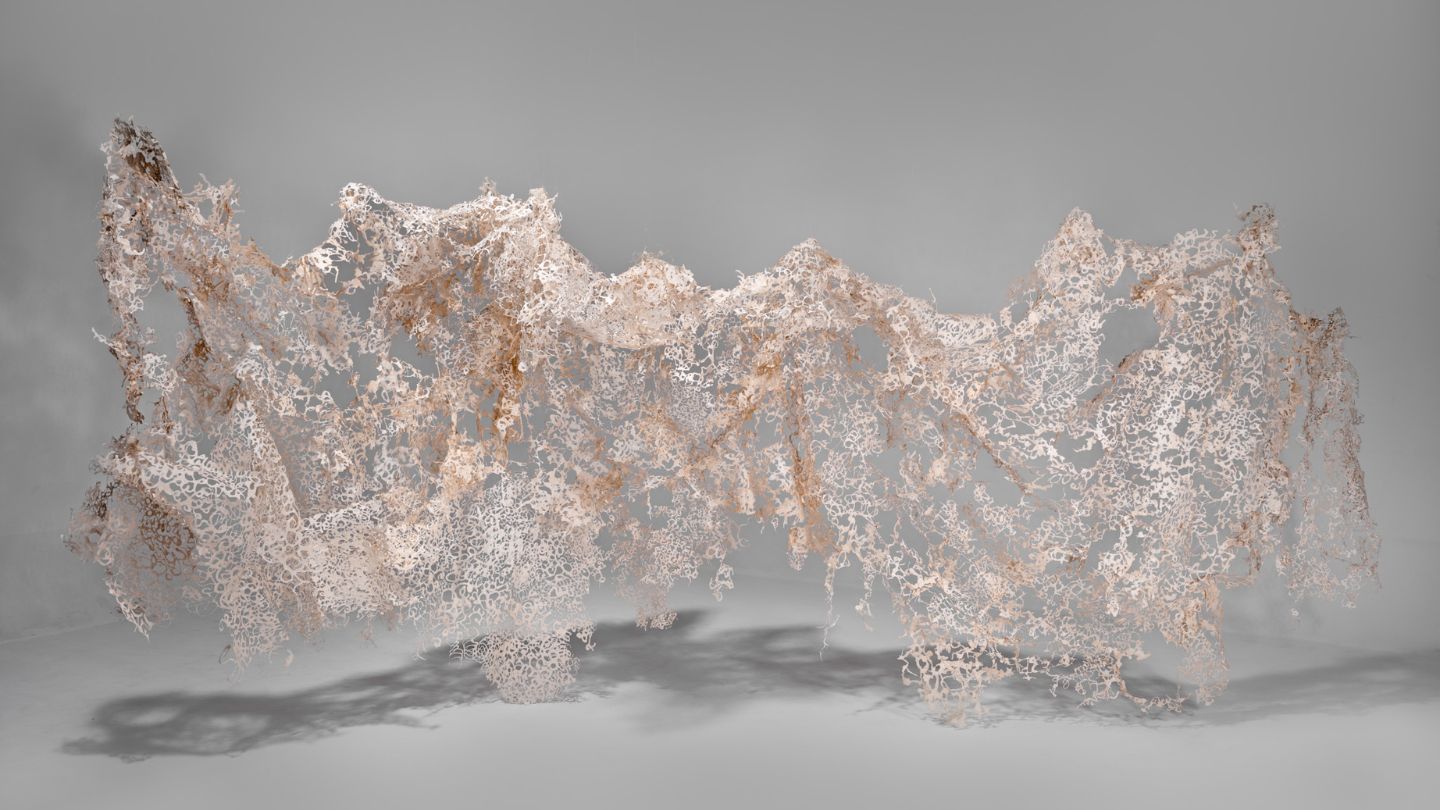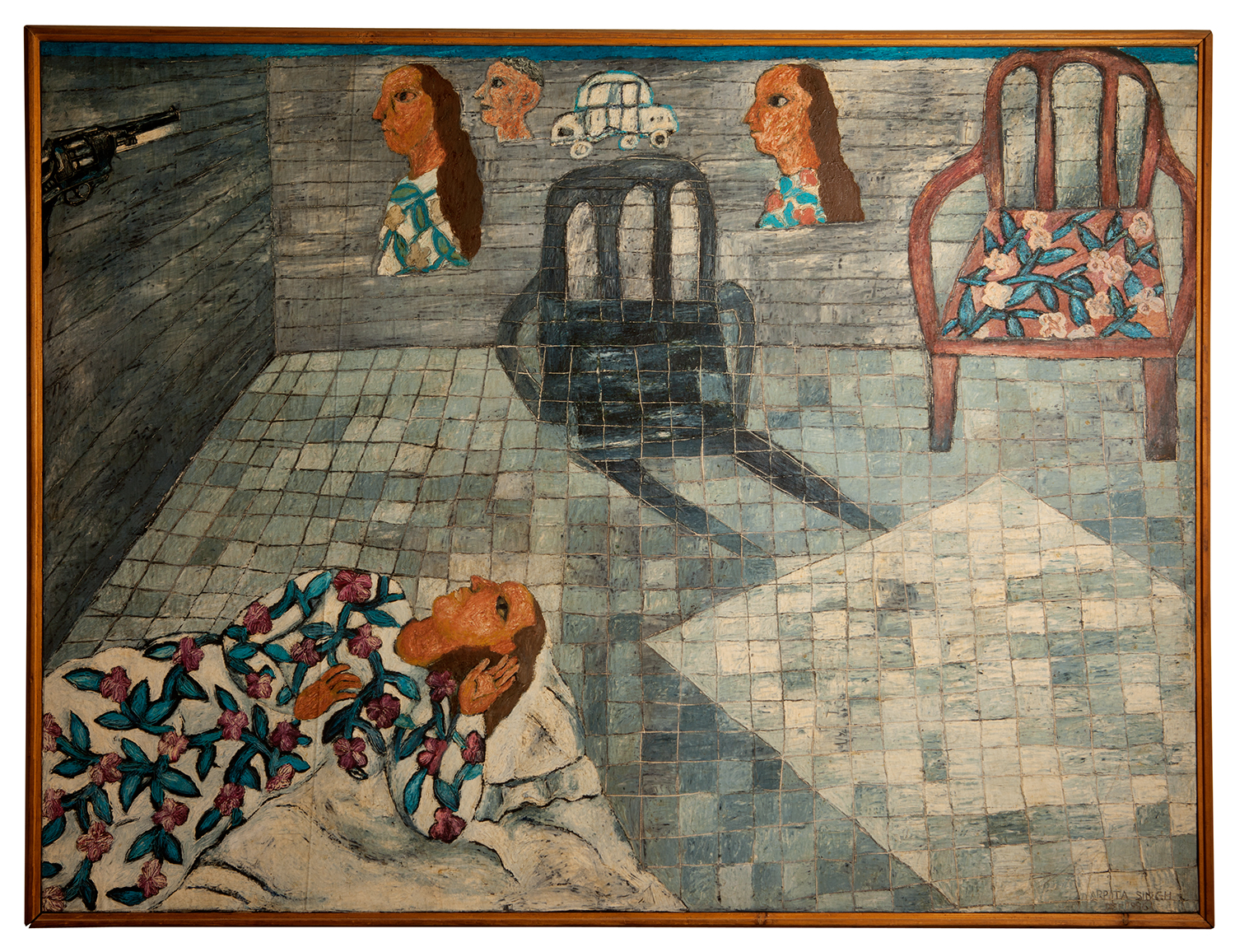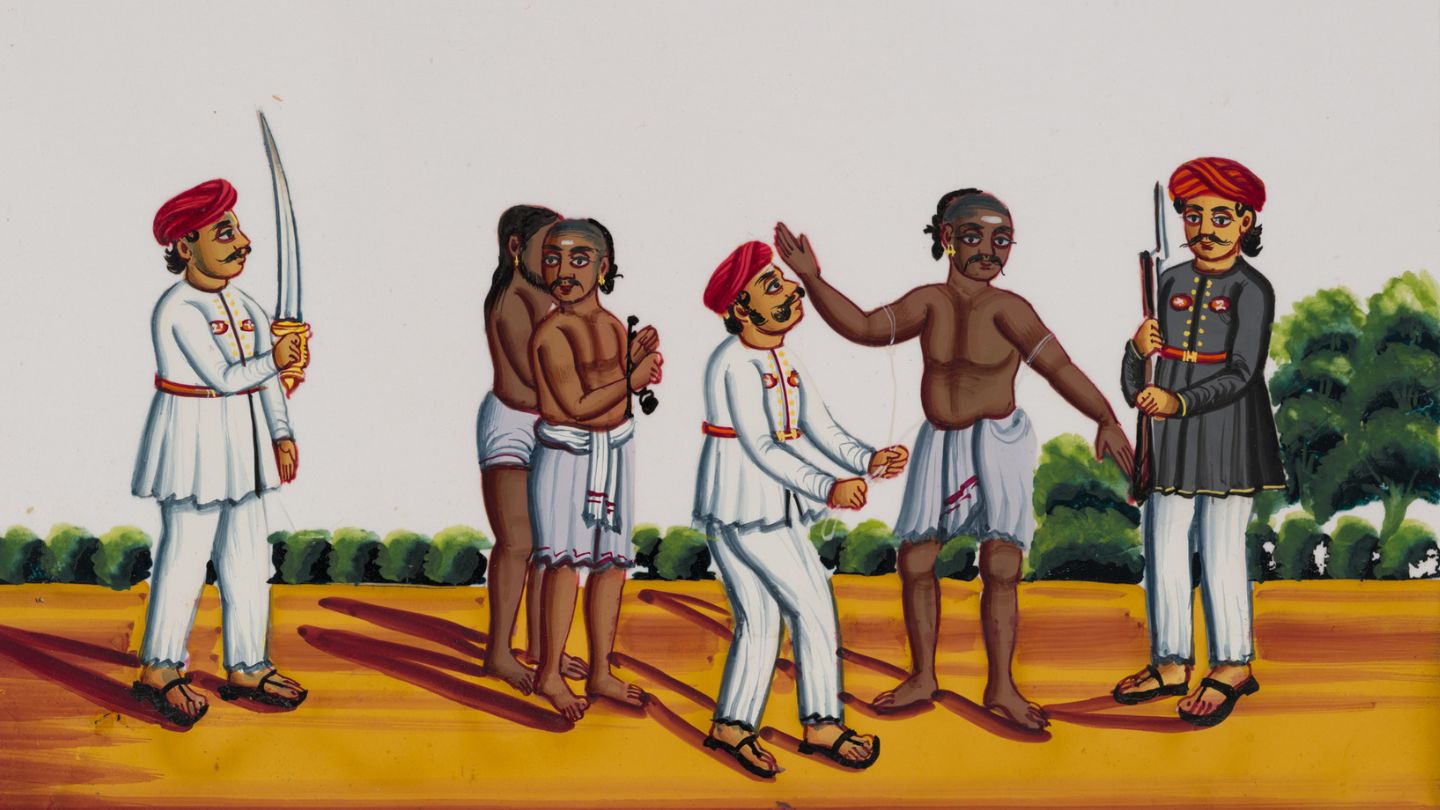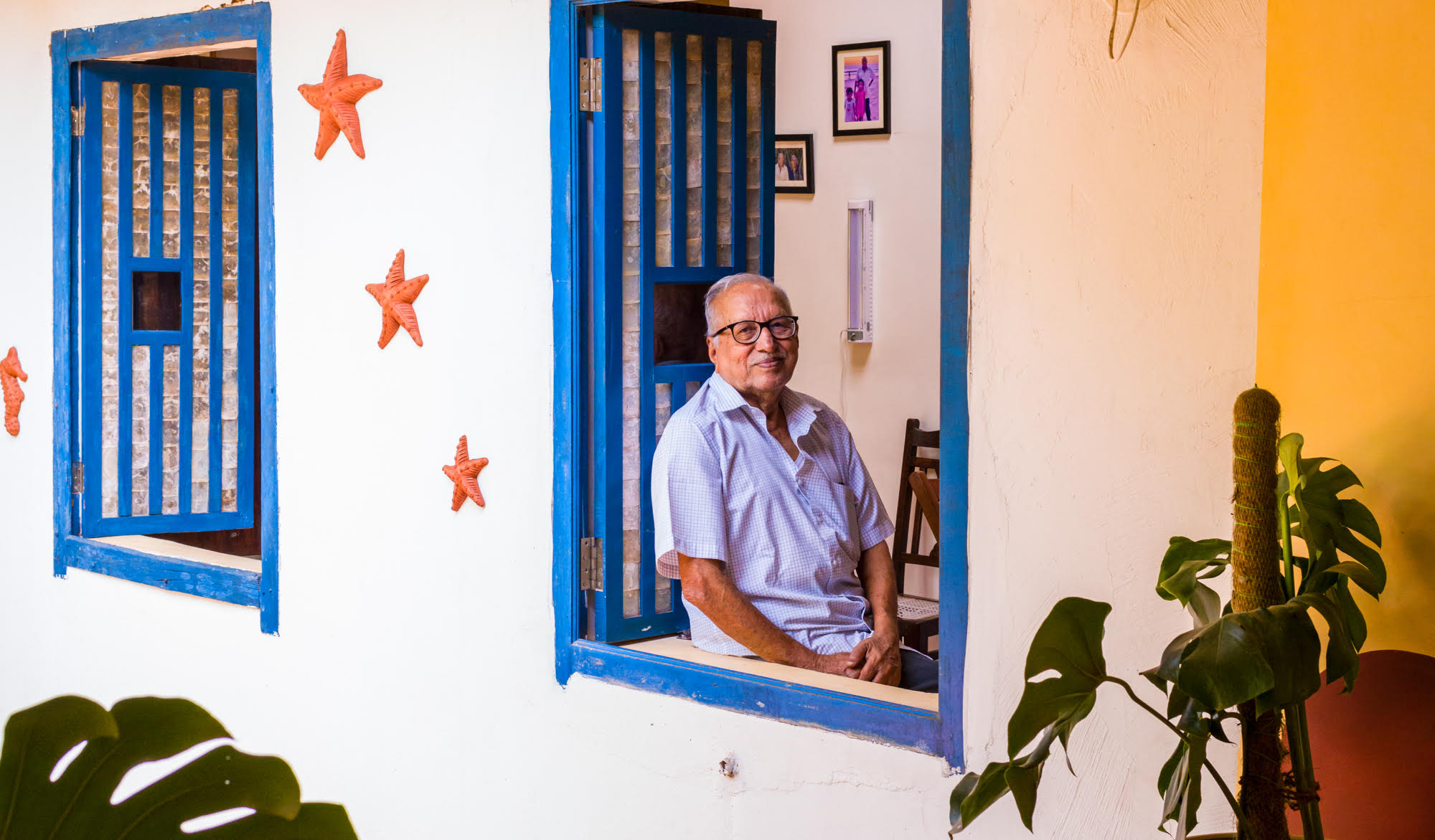Blogs
Why I Love Art: Facing a Goddess Across Oceans
Ranjini Nair
Reckoning how the symbols of home translate outside India on encountering Sutapa Biswas’ Housewives with Steak-Knives, and how art can force us to confront our own biases and flex our empathy muscle.
Having grown up in Delhi all my life, I took the sights, sounds and smells around me for granted. They were so closely connected to my sense of self, that I barely registered the externality of the city that I was a frequent collaborator with. And so, when I found myself in a new country, in a new city so picturesque it seemed to grate my skin, I was thrilled to find an art gallery running an exhibition, featuring artists from South Asia. As I walked into Kettle’s Yard, Cambridge, the visuals curled around me in familiarity – the motifs, vocabulary, language rubbing against my ankles, sidling into my arms, my heart, with an ease I had missed. It was my first intimate encounter with the world of visual art, a space I had so far avoided because there was always the fear that I wouldn’t really understand.
I became a frequent visitor (pandemic notwithstanding) to the gallery. It is where I discovered the artist Sutapa Biswas, and Housewives with Steak-Knives, one of her earliest works created while she was still a student at the University of Leeds. The simultaneous mundanity and menace evoked by the artwork’s title excited me. An artist of the diaspora, familial circumstances led Biswas, still a child of four, from India to England. The painting-collage depicted a reimagining of Goddess Kali, tongue out, decapitated head in hand, heads of dictators garlanded around her neck; a stance against Britain’s colonial record as well as grouses with art history. My first thought was “God, I love that she has underarm hair,” thinking of my own soft, full-body pelt which I have grown with love over the past five years.
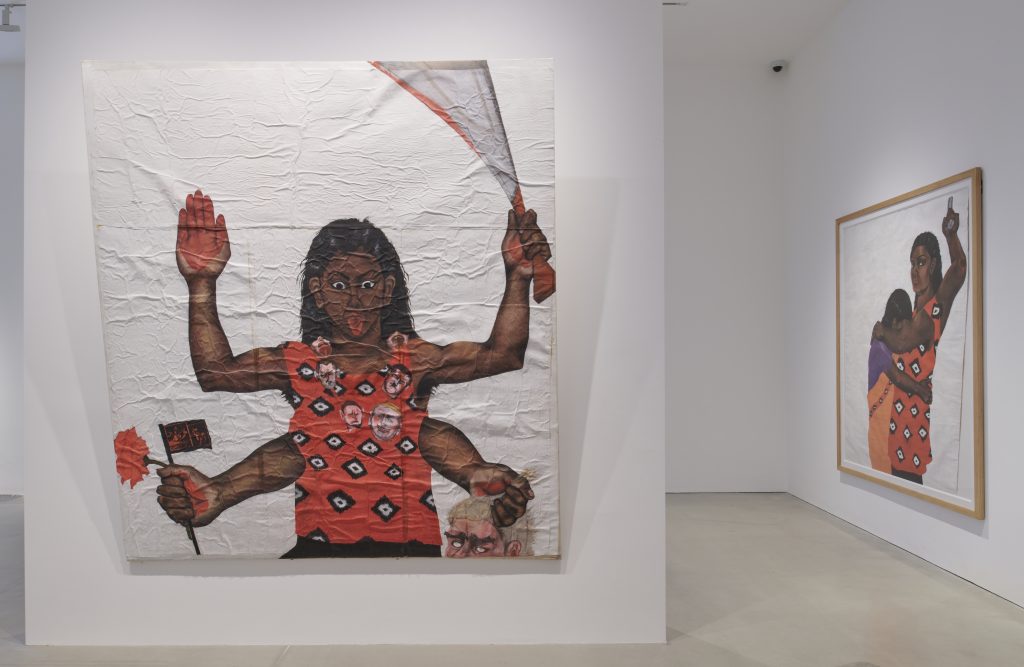
Lumen by Sutapa Biswas, 2021, Collection and image courtesy: Kettle’s Yard. Photo credit: Jo Underhill.
My second reaction to the painting was an inelegant “ughhh”. I was, like countless women around me, tired of women being equated with goddesses. I did not want to be superhuman, fearsome, or fight. I wanted to exist as I was, with my space both in the corner as much as in the sun; as a human, wearing my vulnerabilities as neither ornament nor noose. Then there was the suspicious relationship I had unknowingly cultivated with the diasporic Indian. I was unconvinced that ‘they’ knew how to translate Indian symbols. I worried that the images would render a simplistic conversation on colonisation, dividing power into the coloniser and the colonised, white and brown, conveniently obfuscating discourse around other socio-cultural factors like religion or caste.
As I picked the piece apart, my own biases were on equal display. Biswas’ social, political and cultural realities and the way she reflected them in her art did not have to sit easy with me. I was no custodian of Indian symbolism, or of her Indian identity intermeshed within England of the 1980s, a time and space vastly different from my own. The artwork evoked in me an empathy towards the immigrant Indian experience, which I hadn’t encountered before, even as I questioned the erasure of their privilege. I found myself constantly reviewing, ruminating on, and recalibrating what India means, and what it means to be Indian so far from home. Perhaps a lot of art (created and observed) is to find one which makes your heart whisper, “I am closer to home.”
Ranjini is a Kuchipudi practitioner, occasional dance writer, flower lover, and PhD candidate at the University of Cambridge in an order of preference which she will never reveal.
